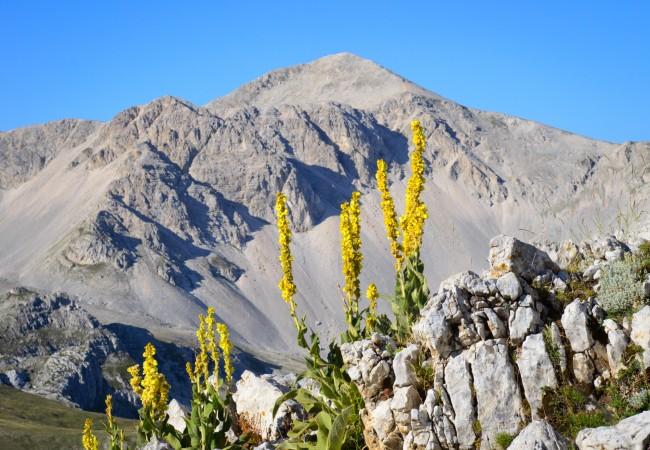‘Path of Bandits’: Walking Through a Little-Known Side of the History of Italy’s Unification
ITA:

Use player to listen to Italian version
150 years ago, at the border between the central Italian regions of Lazio and Abruzzo, the so-called ‘Gang of Cartore’ hid in the wild mountainous area at the foot of Mount Velino, fighting against the invasion of the House of Savoy. The new rulers from the north had increased taxes tenfold on a population that was already extremely poor and had also imposed compulsory draft when it was practically impossible for young men to take time from working the land.
Going into hiding was, then, an act of rebellion; and the stories of these bandits also comprise much violence in terms of abductions, ransoms, abuses, suffered or perpetrated.
It’s a little-known history that took place around the time of the unification of Italy (mid-1800s), which today is being rediscovered thanks to a walking route known as ‘Cammino dei Briganti,’ Path of Bandits.
The 100-km trek can be covered in seven days; it develops at low-medium altitudes, between 800 and 1300 meters, traversing wild landscapes of mountains and forests, and touching on tiny medieval villages where few residents remain, along an itinerary that evokes the idea of the frontier and freedom. The walk is a loop that begins and ends in the village of Sante Marie, in the province of L’Aquila, and indeed crosses a ‘borderland,’ today the frontier between Abruzzo and Lazio, in the past between the Pontifical State and the Bourbon Kingdom. The bandits lived on the border and moved on horseback from one side to the other depending on the threat.
Many are the stories guarded in these areas (specifically the Marsica in Abruzzo and the Cicolano in Lazio), and surely the best way to discover them is on foot, meeting the people who live there, taking time to savor the places.
150 anni fa, al confine tra le regioni di Lazio e Abruzzo, la cosiddetta 'Banda di Cartore' si nascondeva nella selvaggia area ai piedi del Monte Velino, combattendo l'invasione dei Savoia. I nuovi padroni provenienti dal nord avevano aumentato di dieci volte le tasse su una popolazione che era già estremamente povera e aveva anche imposto la leva obbligatoria quando era praticamente impossibile per gli uomini sottrarre tempo al lavoro della terra.
Vivere in clandestinità era, dunque, un atto di ribellione; e le storie di questi banditi sono fatte anche di tanta violenza, con rapimenti, riscatti, abusi, sofferti o perpetrati.
È una storia poco conosciuta che ha avuto luogo nel periodo dell'Unità d'Italia (metà del 1800), che oggi può essere riscoperta grazie a un percorso a piedi noto come Cammino dei Briganti.
Il trekking di 100 km può essere percorso in sette giorni; si sviluppa a quote medio-basse, tra gli 800 e i 1300 metri, attraversando paesaggi selvaggi tra montagne e boschi e toccando piccoli villaggi medievali dove rimangono pochi abitanti, lungo un itinerario che evoca l'idea della frontiera e della libertà. Il trek è un anello che inizia e finisce nel villaggio di Sante Marie, in provincia dell'Aquila, e attraversa in effetti una “terra di confine”, oggi quello tra l'Abruzzo e il Lazio, in passato tra lo Stato Pontificio e il Regno dei Borboni. I briganti vivevano in queste zone di confine e si spostavano a cavallo da un lato all'altro a seconda della minaccia.
Molte sono le storie custodite in queste zone (specificamente la Marsica in Abruzzo e il Cicolano nel Lazio), e il modo migliore per scoprirle è a piedi, incontrando le persone che ci vivono, e prendendosi del tempo per assaporare i luoghi.











